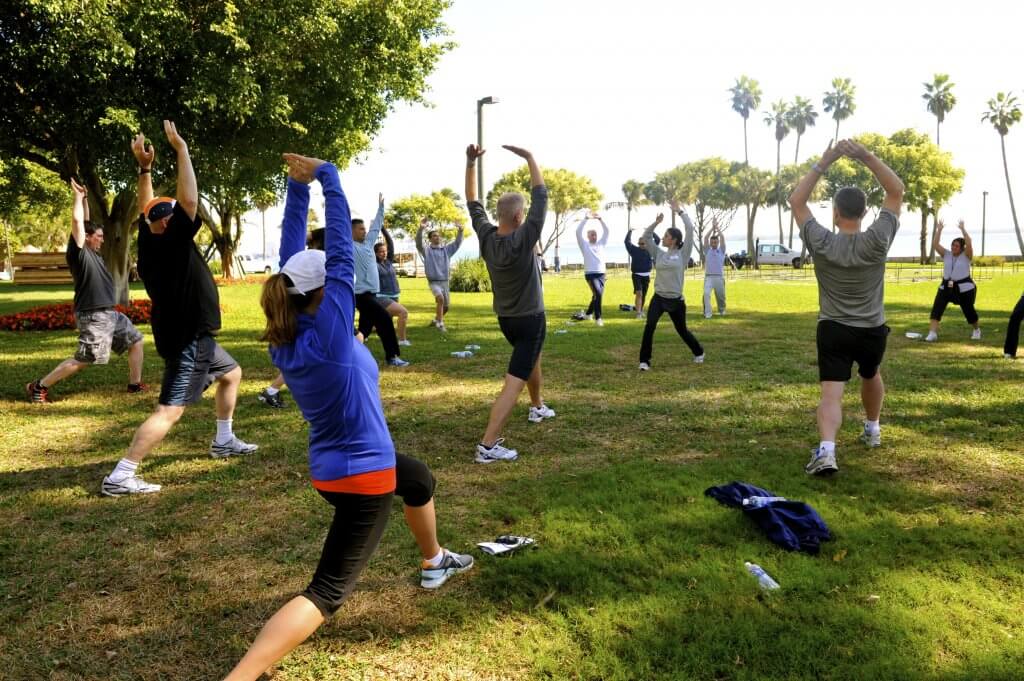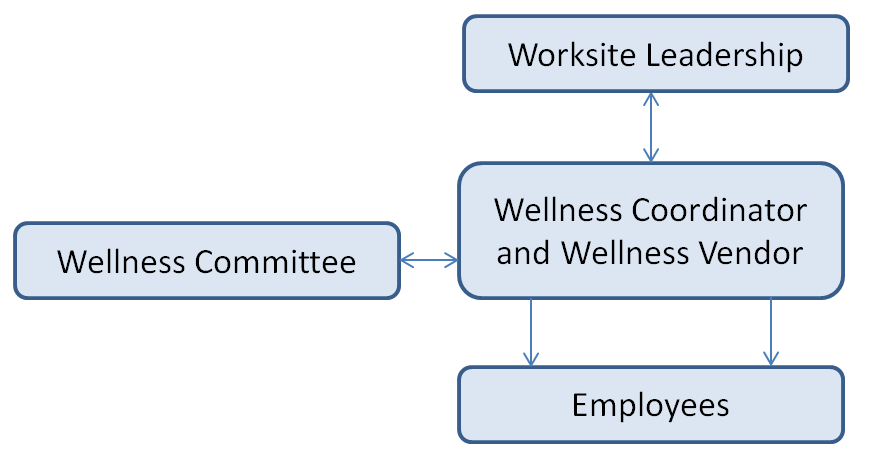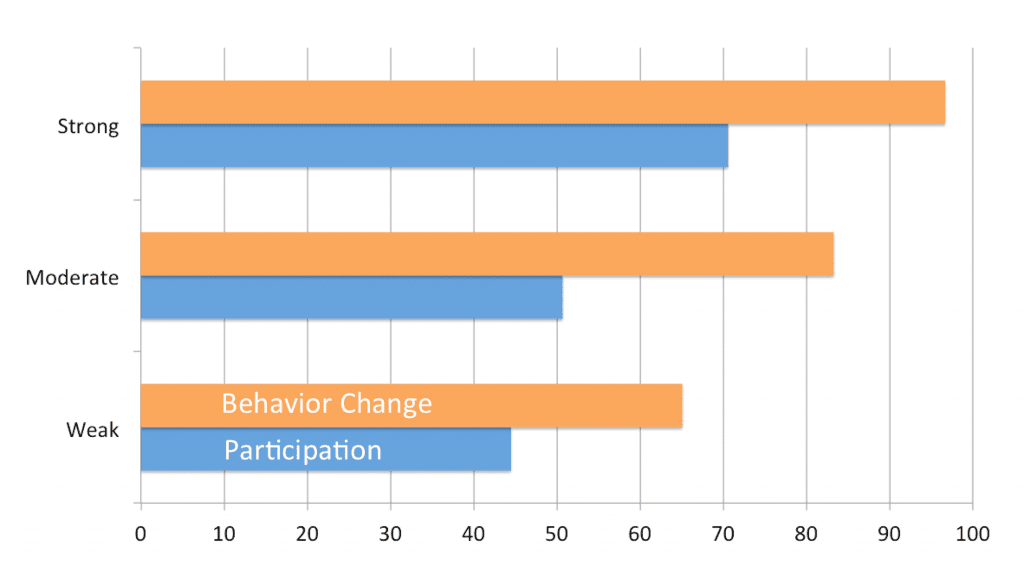What is a Worksite Wellness Committee?
A worksite wellness committee is a small group of employees who lead and participate in an employee wellness program. These committees provide leadership and oversight to help make the wellness programs effective. A worksite wellness committee can have a big impact on the success or failure of any employee wellness program.
The goal of a wellness program is to encourage employees to live a healthier life. In this article, I’ll answer common questions about worksite wellness committees, describe how to create and manage a wellness committee, and provide case studies that show the positive wellness program outcomes that are possible when your wellness program gets help and guidance from a wellness committee.
Why Does Your Wellness Program Need a Worksite Wellness Committee?
1) A worksite wellness committee gives employees a sense of ownership of the wellness program. Input from employees will help to create a wellness program all employees will appreciate and enjoy. Employees will appreciate that other employees are involved in how it works.
2) It gives employees control over what wellness programming, events, and wellness challenges are offered.
3) Program participation will be much higher when committee members help market the program and are seen participating.
4) A wellness committee is helpful in identifying wellness program incentives that will be meaningful to your employees.
5) Wellness committees are a great way to create a wellness program by the employees for the employees. When your wellness efforts take a bottom-up approach, rather than a top-down approach, to improving employee health and productivity, they will just work better. Employees are happier and more productive when they feel they have control of what happens at work.
6) Successful wellness programs have a lot of tasks that need to be completed. Your wellness committee can help do the work that is required to have a great program.
A worksite wellness committee provides guidance during the implementation and management of your wellness program.
WellSteps Training Video on How a Wellness Committee Can Help
How Would You Create a Worksite Wellness Committee?
Creating a committee isn’t as intimidating as it might sound. Below we will explain how exactly to set up that committee.
How Many Employees Should Serve on Your Committee?
Rules regarding committee work are different for every organization. Here is general rule of thumb that we have created from the hundreds of wellness committees that work with WellSteps:
- Fewer than 300 employees—3 to 8 committee members
- 300 to 1,000 employees—8 to 12 committee members
- 1,001 or more employees—12 to 15 committee members

Who Should Serve on Your Worksite Wellness Committee?
Your wellness committee should be representative of your workforce. Try to include representatives from multiple organizational levels such as full-time, part-time, managers, front-line employees, salary, hourly, etc. Get members from different departments and locations.
Consider including people who have responsibility for some aspect of employee health and well-being such as human resources, cafeteria, legal, etc. Find individuals who are passionate about wellness and excited about the company wellness program even though they might not be the healthiest employees.
We call these wellness champions. Besides helping to provide great ideas, most wellness champions will support your wellness program.
In every worksite, there will be a few employees who are not interested in your wellness program. These naysayers may think that wellness programs are an intrusion into their personal lives, a waste of time, or even some global conspiracy concocted by the fruit and vegetable industry.
You should listen to these naysayers. They may be reluctant at first, but over the years we have learned that having naysayers on your wellness committee gives you insights into their reservations and concerns. By including your naysayers, you let them know you are listening to their concerns and challenges.
Listening is this first part of effective communication. When you communicate well, your wellness program will be more successful.
More often than not, wellness naysayers often become wellness champions. Ultimately they will help your program become more effective.

Who Should Lead the Wellness Committee?
Every worksite wellness program should have a wellness program coordinator that leads the wellness committee. WellSteps works with many wellness programs that have wellness coordinators who have limited time and expertise to contribute to the wellness program.
In these cases our wellness experts, called WellSteps Guides, can help create the wellness committee agendas, conduct wellness committee meetings, and help make the program a success.
Working with the onsite wellness coordinators, our WellSteps Guides are available to do much of the heavy lifting if needed. The goals are to make the wellness program as successful as possible and to avoid making program mistakes.

How Should You Recruit Wellness Committee Members?
You can recruit the people you want or ask for volunteers. If you ask for volunteers, accept applications so you can ensure that your committee is made up of positive people. You might need to get approval from management.
You will quickly discover that many employees will gladly serve on the wellness committee. Of all the committee assignments employees face, serving on the wellness committee is nearly always perceived as being one of the best.
How Long is the Wellness Committee Commitment?
We suggest a one to two year commitment. At the end of each year, restructure the committee as needed. You can choose any length of commitment, but we suggest communicating a set length up front.
How Much Time Can Committee Members Expect to Contribute to this Effort?
Generally, worksite wellness committees meet monthly. The time commitment for committee members can range from 1-4 hours per month.
11 Ways a Worksite Wellness Committee Helps Programs Succeed
The most important role for wellness committee members is show support for the wellness program by participating and by being enthusiastic. Here are a few other roles:
- Attend and participate in all wellness committee meetings.
- Help select Behavior Campaigns for the year.
- Help decide what incentives to offer with each wellness campaign.
- Be enthusiastic and promote the wellness campaigns and initiatives.
- Participate in the wellness program.
- Be available to answer questions about wellness or refer employees to your wellness coordinator or vendor.
- Ensure that promotional posters are displayed at your worksite prior to the kickoff and campaigns.
- Ensure that campaign materials are distributed at your worksite (books, magnets, water bottles, etc).
- Share constructive feedback and success stories with your wellness coordinator and company leadership team.
- Complete the Checklist to Change and work to improve the environment at your worksite.
- Contribute your ideas and experiences to wellness program discussions.
It is important that wellness committee members are aware of their role. Be sure to explain these roles to committee members. Encourage them to report feedback of the wellness program from employees to ensure that your program reflects the needs of your company.

Evidence That Worksite Wellness Committees Make a Difference
Since we are influenced by observed behavior, the actions of wellness committee members is an important factor in shaping employee behavior. There is no question that the example of senior leadership and a wellness committee can have a powerful influence on workplace wellness programs—for the good OR the bad.
In fact, the wellness programs that have the best return on investment tend to exist in organizations with supportive leadership. Below are some case studies and research findings that demonstrate this concept.
Case Study Number 1
A few years back, WellSteps worked with Kaiser Permanente to deliver the WellSteps Small Business Solution to dozens of companies. After this program was over, the companies were placed into one of the three groups based on their leadership support and help from a wellness committee: Weak, Moderate, or Strong.
We then looked at the percentage of employees who participated and who changed at least one behavior.
As shown above, companies with stronger leadership and committee support (bars on top) had far greater participation and had more employees who reported changing at least one behavior. This data also shows what is known as a graded response.
Though not ideal, moderate leadership was better than weak leadership, suggesting that at least some leadership and wellness committee support is better than none. Strong leadership and committee support is even better.
In fact, strong leadership and committee support was worth an additional 25 percentage points in participation and over 30 percentage points in behavior change. The stronger the support, the more the employees participated and changed their behaviors.

Case Study Number 2
In 2012, the data from 455 companies who voluntarily completed the scorecard from the Health Enhancement Research Organization were evaluated. The full report of this analysis is provided here. In this evaluation, the relationship between supportive leadership and committees on employee health risks and medical costs was examined.
Each company was placed into one of three groups according to their degree of leadership support, from “marginal” to “supportive” to “very supportive.” In like manner, improvement in employee health risk or cost was grouped from “none” to “substantial.”
We expected that more companies with very supportive leadership would also report much larger improvements in health risk and/or cost. We also expected the opposite to be true. In other words, among companies with marginally supportive leadership, we anticipated those companies would have poorer results.
Here is what we found: the companies with very supportive leadership and wellness committees were 4.2 times more likely to report substantial improvement in employee health risk. They were also 2.5 times more likely to report substantial reduction in medical costs.
The companies with marginally supportive leadership were about 4 times more likely to report no improvement in employee health risk or reduction in medical costs.

Case Study Number 3
In 2016, the Institute for Health and Productivity Studies published a comprehensive study to identify key success elements of employer-sponsored health promotion (wellness) programs.
They used three methods to identify the success elements: a review of the relevant peer-reviewed literature focused on best practices, discussions with experts in the field, and site visits to companies with proven programs.
The key determinant of success was the ability to create a culture of health at the workplace, and this is only possible with the support of visionary leadership—including a wellness committee. The authors summed up the importance of leadership support this way:
In these successful programs, leaders consistently express the importance of employee health and well-being to the organization (through words, actions, and policies), they established a worksite wellness committee, and they devote sufficient resources to health promotion efforts, even if programs are not expected to save money immediately.

So What’s Next?
Worksite wellness committees are a vital component of all successful wellness programs. Case studies and published reports document, with evidence, what most of us already know: Wellness programs that have wellness committees produce positive wellness outcomes.
The challenge is to make sure your program has an organized and well functioning worksite wellness committee. Schedule a free demo with our WellSteps team to help you getting your worksite wellness committee in place for your organization.

